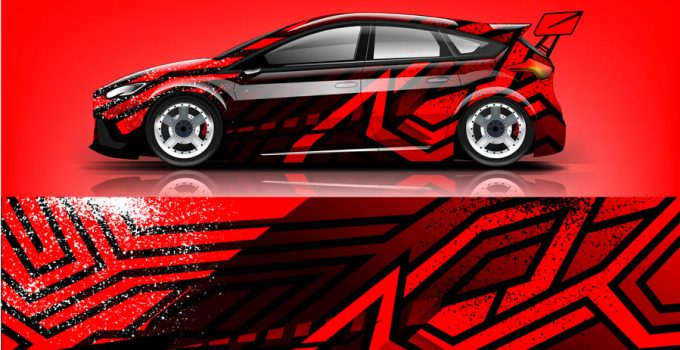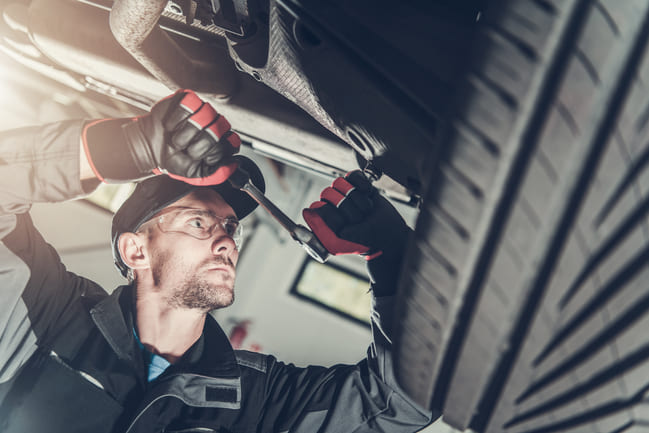
Individuality is becoming more and more important. You want to stand out from the crowd, be or have something special. It is therefore no wonder that this trend does not stop at cars, motorcycles and other vehicles. The desire to convert and change one's own vehicle according to one's personal ideas is realized through “tuning” (derived from the English verb “to tune”, i.e. “to bring something into line/tune”). A distinction can be made between two major areas, namely technical and optical tuning. The former usually refers to the increase and optimization of performance, aerodynamics and acoustics, while the latter means changing the appearance through paint work or changes to the interior.
While there are often no limits to the imagination, you should be careful when tuning a car, since not all technically feasible changes and conversions are also legally permissible. In The United Kingdom in particular, the relevant laws and regulations are particularly strict. Therefore, before buying tuning parts, you should find out what is actually allowed, since all changes to the original vehicle must be approved by TÜV or DEKRA. In this article we will go into the four main areas of car tuning, give you tips on tuning and explain what needs to be considered.
Contents
Tuning of the engine and others Vehicle technology
Engine tuning is one of the most popular areas in vehicle tuning, as it is primarily about increasing the performance of the engine.
Here you have three different methods to choose from:
- Increasing the displacement: This can be achieved by increasing the piston diameter or lengthening the cylinder. The resulting increased mass throughput per piston passage can in some cases significantly increase engine performance.
- Increasing the speed: A turbocharger (diesel engines) or a compressor (petrol engines) is usually installed here, which ensures improved combustion and thus more power through an increased air supply. However, this is often made more difficult by the complex interaction of the different components.
- Change in mean effective pressure: This is the average of the cylinder pressure values and can be improved by modifying the intake valves or the cylinder head.
The area of engine tuning includes the following sub-areas:

- Chip tuning or OBD tuning: Here, special software and suitable devices are used to access the vehicle's memory chip and the characteristic data stored there by the manufacturer are overwritten in order to achieve a significant increase in engine performance, for example by optimizing the injection and intake process or changing the ignition timing to achieve. The big advantage here is that no structural changes are required. However, it must be ensured that the components mounted in and on the engine can withstand the higher heat development.
- Intercooling: The intercooler, fitted between the compressor and the intake valve, cools the air before it enters the engine's combustion chamber, allowing more fuel to be burned without the risk of engine overheating.
- Water Injection: This has a similar effect, but here it is achieved by injecting distilled water into the Combustion air reached.
- Engine charging: Air is fed into the combustion chambers under increased pressure, which means that the air there is compressed and the engine can save energy.
- Nitrous Oxide Injection: Nitrous oxide is a mixture of nitrogen and oxygen that breaks down into its individual components when heated. The additional oxygen can accelerate fuel combustion and increase engine speed. However, this only results in a short increase in performance and is also illegal in The United Kingdom.
- Lighting: This is mainly used to customize the vehicle and includes the installation of additional headlights such as underbody lights, daytime running lights, position lights and fog lights.
Chassis tuning

In contrast to the changes hidden under the bonnet, the chassis tuning such as lowering and wheel spacers is mainly used to visually set the vehicle apart from the crowd and give it a sportier design. However, as with all tuning measures, caution is required, since the operating permit can quickly expire if changes are not permitted. In addition, the bodywork must not be lowered so far that the tire touches the fenders, as this increases the risk of an accident and can seriously damage the vehicle.
If you want to tune your car by lowering it, you have the following options:
- Lowering springs: The chassis springs installed at the factory on the wheel suspension or the shock absorbers are replaced with shorter and harder springs.
- Sports suspension or coilover suspension: Not only the springs but also the shock absorbers are replaced, which means that wear progresses much more slowly than with simple lowering springs. The coilover suspension has the advantage over the sports suspension that the suspension can be individually adjusted in height.
- Hydraulic suspension or Air suspension (Lowrider): Each spring is equipped with a hydraulic pump, which allows the springs to be individually adjusted independently of one another. This is particularly popular in the USA and is mainly used for show purposes, since vehicles converted in this way are not permitted on the road.
- Tires and rims: If you want to tune up your car but don't want to make any structural changes, you can do this by selecting special rims and tires. However, it should be noted that the selected tire size is also approved for the respective vehicle. In addition, not all rims are permitted for road use, especially if individual elements or decorations protrude and would therefore pose a danger to other road users.
Body tuning
If you want to tune the exterior of your car, you can easily do this by repainting the rims or the body. But other changes can also be made as part of body tuning. This is primarily about visual customization, but improvements in aerodynamics and driving characteristics are also possible.
This area includes, but is not limited to:
- Chopping: This involves lowering the roof and reducing the size of the windows by sawing up and removing parts from the body's A, B and C pillars.
- Cleaning: Disturbing parts such as decorative strips, lettering, door handles and covers are removed.
- Changing doors: This is the most complex and expensive area of body tuning, since completely new door systems, especially scissor and gullwing doors, are installed.
- Adding spoilers: Whether it's a front or rear spoiler, this car tuning accessory makes your car look sportier.
Tuning of the car interior

If you want to beautify the interior of your car, the possibilities are seemingly limitless. And most changes to the interior of the vehicle do not require approval either. This includes, among other things, the installation of sports seats, individual floor mats, the conversion of the standard belt system to a 4 or 6-point belt system and the installation of a sports steering wheel. But acoustic changes are also possible in the form of more powerful sound systems. However, caution is advised here, as the catalog of fines sometimes stipulates high penalties for such tuning measures. In particular, if the system is too loud and is displayed as noise pollution or it is so loud that warning signals such as sirens, sirens and foghorns can no longer be heard.
Conclusion
From a technical point of view, there seem to be no limits to car tuning. Regardless of whether the engine performance is to be increased or the exterior is to be sportier and more eye-catching, experienced tuners can make almost all wishes come true. But when is tuning illegal? It is not permitted to change the vehicle class (e.g. to convert a car into a truck) or to make changes that could increase exhaust emissions and noise pollution or endanger other road users. A power increase of the engine by more than 5% is always subject to approval. Even parts that are retrofitted to your car can quickly lead to the general operating license becoming void. Wheel rims, components for aerodynamics such as spoilers and changes to the chassis are normally subject to approval. A tuned car without official acceptance and approval can result in fines of between 25 and 240 euros. Violations range from loud music to an invalid operating license to obstructing the police, fire brigade and ambulance. In addition, all tuning measures must be reported to the insurance company in order to avoid difficulties in the event of damage or the loss of insurance cover because the vehicle value changes, there is a higher risk of accidents or the vehicle is classified in a higher class, which is why a higher premium is usually required will.
